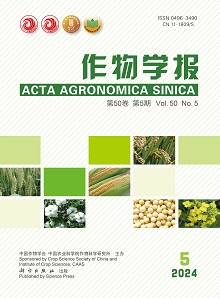Aiming at the problems of yield increase constrained and low fertilizer efficiency, the effect of green manure incorporation and nitrogen application on wheat yield and nitrogen utilization were investigated and the field experiment was conducted in Hexi oasis irrigated area in 2021 and 2022. Compared with the control of traditional nitrogen application mode (G0N1), setting the following treatments include green manure incorporation at 7500 kg hm-2 (G1), 15,000 kg hm-2 (G2), 22,500 kg hm-2 (G3), and 30,000 kg hm-2 (G4), and nitrogen fertilizer reduction at 153 kg hm-2 (N2), and 126 kg hm-2 (N3), their combined application with each other as G1N2, G2N2, G3N2, G4N2, G1N3, G2N3, G3N3, G4N3, and the combined effects on nitrogen absorption and accumulation and grain yield of wheat were analyzed. The results showed that green manure incorporation at 30,000 kg hm-2 combined with chemical nitrogen fertilizer reduction by 15% (G4N2) can effectively improve crop yield and promote nitrogen use efficiency at the same time. Compared with G0N1, the grain yield and N utilization efficiency (NUTE) of G4N2 were significantly increased by 8.2% and 45.4%, respectively. Compared with G2N2, G4N3, and G3N3, G4N2 increased grain yield and NUTE by 26.1%, 19.1%, 15.5% and 28.9%, 8.4%, and 24.3%, respectively. Compared with G0N1, G4N2 significantly increased harvest index, nitrogen fertilizer partial productivity (PFPN), and nitrogen harvest index (NHI) by 36.8%, 43.8%, and 33.9%, respectively, and compared with G3N2, G2N2, G4N3, and G3N3 by 15.0%-26.3%, 9.6%-29.2%, and 5.6%-11.2%, respectively. At anthesis and maturity stages, the AGN and NNI of G4N2 were significantly increased by 22.5% and 13.9%, 38.1% and 37.4%, compared with other treatments. Compared with G0N1, G4N2 significantly increased nitrogen translocation of stems and leaves by 35.8% and 20.4%, and significantly increased nitrogen translocation rate by 26.6% and 23.3%, and significantly increased the contribution of translocated nitrogen to grain by 29.1%, 25.7% in wheat. In conclusion, green manure incorporation at 30,000 kg hm-2 combined with chemical nitrogen fertilizer reduction by 15% can effectively coordinate the aboveground nitrogen accumulation and translocation, significantly increased nitrogen harvest index and partial nitrogen fertilizer productivity, thus increasing wheat yield.

 WeChat
WeChat
 WeChat
WeChat